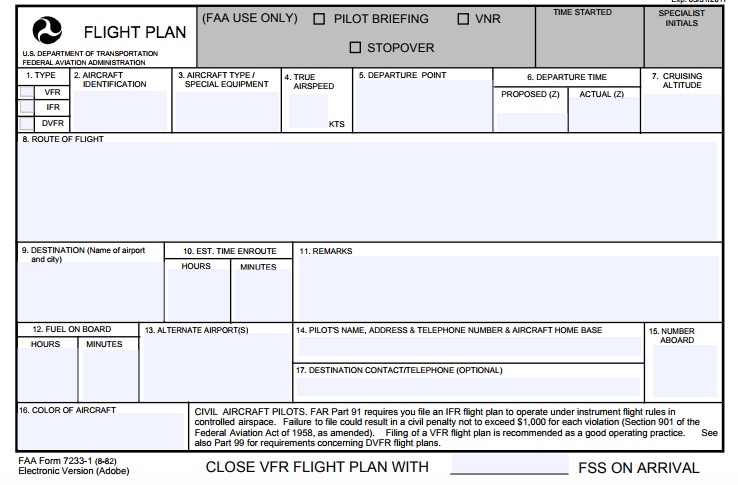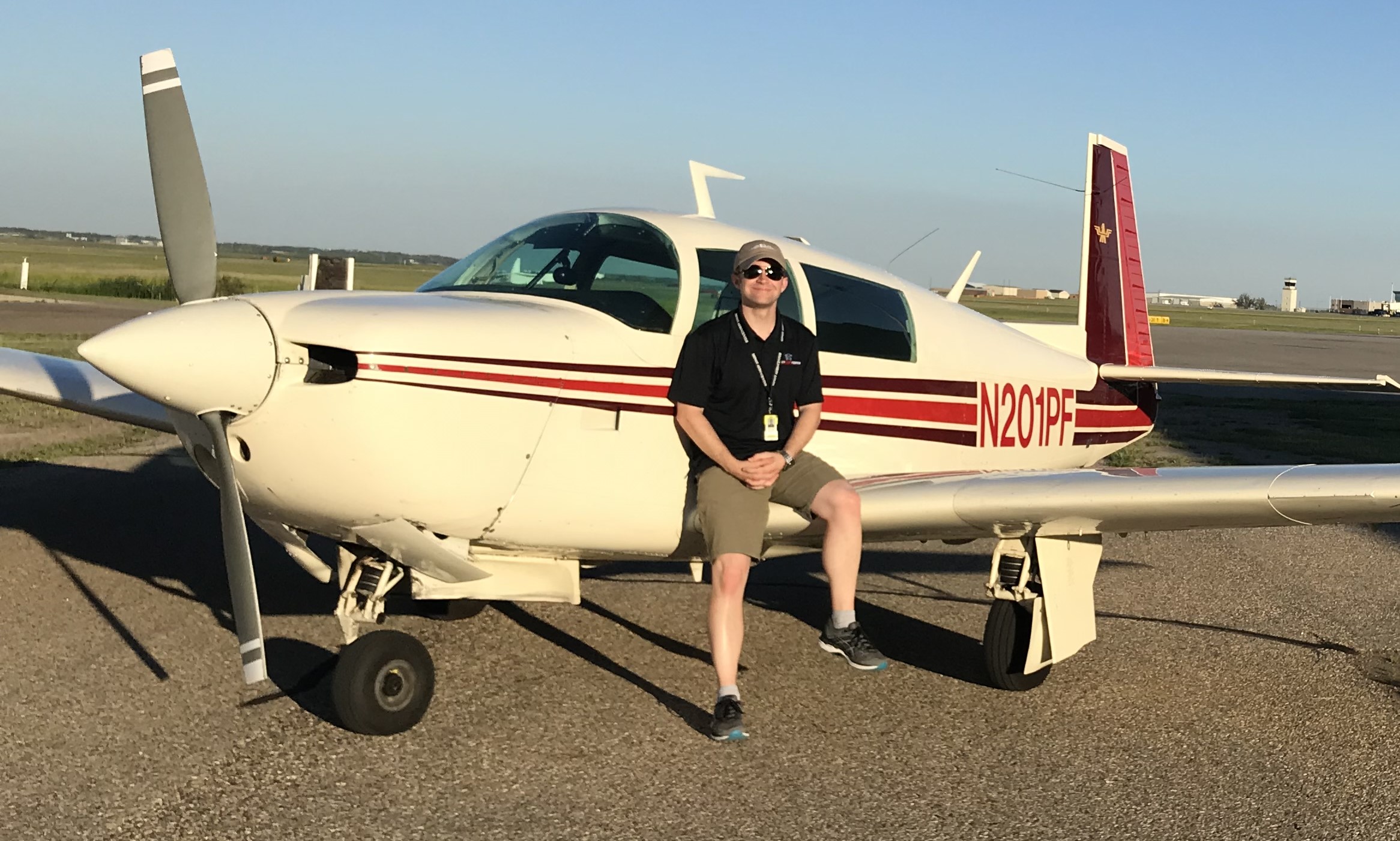| NAFI NOTAMs #28 |
In Defense of the VFR Flight plan, and Being Prepared ~Guest Blogger Patrick Howell CFIIFirst off, a confession…I filed one VFR flight plan in the first ten years of my flying career. Frankly, I just did not see the point. I did most of my primary flight training, from private all the way through CFI, in and around southern states, mostly Texas, Louisiana and Mississippi. As a student pilot, my flight school based was at San Antonio International (KSAT), before moving to Stinson Airfield (KSSF), so we were always talking to ATC. I was then and remain a habitual user of VFR flight following, and I found more utility in it than filing a flight plan, as well. Also, it was not an emphasis item with my flight school, so just like the law of primacy states, first learned is best learned….and my first learned habit was not to file a VFR flight plan. So, I flew like that for many years…
…then I moved to North Dakota. One of the first things I noticed about flying there at the altitudes we typically cruise at in our light single engine aircraft was that radar coverage was spotty at best. My next impression was that this was one of the most sparsely populated places I had flown over, and third, it was cold! As I type this in late December 2021, North Dakota is currently in the grips of a winter storm, and wind chills there are plunging to as low as negative fifty. That’s not your everyday weather, but winters there are long, cold and windy. We’d fly as low as zero degrees ambient temperature. All these factors combined made me begin to rethink my stance on the ole’ VFR flight plan. It dawned on me that if, Heaven forbid, I suffered an engine failure in a place where it may be miles before you could find either shelter or a way to contact emergency services, it might be a very long time before anyone realized I was missing. I wanted somebody to know I was overdue, and to send somebody to come looking for me. How can I make that happen? File a VFR flight plan…Nowadays, technology makes this easy. I don’t even have to call a flight service station on the radio anymore. Foreflight allows me to open and close my VFR flight plan directly from the app. Leidos Flight Service facilitates the opening and closing of your flight plan via a text message or phone call to an automated number. Big picture, the VFR flight plan is easy to use, costs nothing and is an additional safety layer in your flying.
Now, not at all of us fly in such harsh conditions, so what are the takeaways here? First, I’d urge all of us to make a frank evaluation of how prepared we are to deal with an emergency in whatever place we fly. A first aid kit, for example, is a required item for Pt 121 and Pt 135 operations, but not under Pt 91. How many general aviation airplanes have you flown that have a first aid kit? How about a fire extinguisher? Second, be deliberate in examining your habits, and don’t be afraid to change them, as hard as that may be to do. I went ten years not filing flight plans, until I spent some time thinking critically about whether that was a good idea or not. After I came to the realization that it was in my best interest to do so, I made sure all my students knew how to use them, and why I thought it was important to do so. Fly safe!
Blogs are intended for educational purposes only and do not replace independent, professional judgment. Statements of fact and opinions expressed are those of the author individually and, unless expressly stated to the contrary, are not the opinions or position of the National Association of Flight Instructors. NAFI does not endorse or approve, and assumes no responsibility for, the content, accuracy or completeness of the information presented. Readers should note content may appear in various media, including print, email, enews without further notice. |


 It is not, however, the only thing I started doing to enhance my chances of survival in the event of a mishap in the harsh Dakota winter conditions. Per the FAA, even if an aircraft is overdue, a search will not be launched until daylight hours unless an ELT is actively transmitting. It’s likely if the crash happened after dark, I’d be spending the night on the prairie, so I pieced together a survival kit that became a required item any time I was away from the immediate vicinity of the airport. It has military-style MRE food and water, in case it’s a while before I can get picked up. Since it’s so often cold and windy in the Dakotas, it has two space blankets to help insulate me and my student, if I’m flying with one, against the winter conditions. It’s got a case of water proof matches and a flint to help make a fire to keep me warm. I also added a first aid trauma kit when I realized that if I sustained any injuries, I’m my own best bet to deal with that situation, as it may take a while for rescuers to locate me. Finally, I added a daytime signaling mirror and a flashlight with a strobe to help search and rescue personnel pinpoint my location.
It is not, however, the only thing I started doing to enhance my chances of survival in the event of a mishap in the harsh Dakota winter conditions. Per the FAA, even if an aircraft is overdue, a search will not be launched until daylight hours unless an ELT is actively transmitting. It’s likely if the crash happened after dark, I’d be spending the night on the prairie, so I pieced together a survival kit that became a required item any time I was away from the immediate vicinity of the airport. It has military-style MRE food and water, in case it’s a while before I can get picked up. Since it’s so often cold and windy in the Dakotas, it has two space blankets to help insulate me and my student, if I’m flying with one, against the winter conditions. It’s got a case of water proof matches and a flint to help make a fire to keep me warm. I also added a first aid trauma kit when I realized that if I sustained any injuries, I’m my own best bet to deal with that situation, as it may take a while for rescuers to locate me. Finally, I added a daytime signaling mirror and a flashlight with a strobe to help search and rescue personnel pinpoint my location. Patrick Howell, CFII
Patrick Howell, CFII





Leon and Thomas thanks for reading! I hope you are enjoying NAFI NOTAMs!!
Agree as well! I spent more than 40 years flying in the Dakotas, Montana and Wyoming!Patrick,was photograph taken at Minot?
Excellent article! Good ideas. (Maybe the example flight plan should be ICAO?)